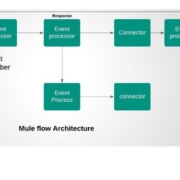I am an « automation fundamentalist ». What I mean by that, is that I will go through large amounts of pain to avoid having to manually type code if I am able to have my computer do it automatically for me. The reasons are fairly self evident, because all bugs originates from a human being having written code at some point in time. Hence, if I can completely avoid manually writing code, the argument is that I can create 100% perfect software systems, that won’t even in theory be allowed to contain bugs of any kind. This idea extends to writing Unit Tests too.
Therefor, I created the ability to automatically generate Unit Tests in Magic. To understand how, watch the following video, where I demonstrate how I invoke an HTTP REST endpoint, for then to persist the invocation, allowing me to « replay » it later. The idea of course, is that being able to replay an HTTP invocation, can help me sanity check my system further down the road, as I modify it for whatever reasons I have to modify it.






